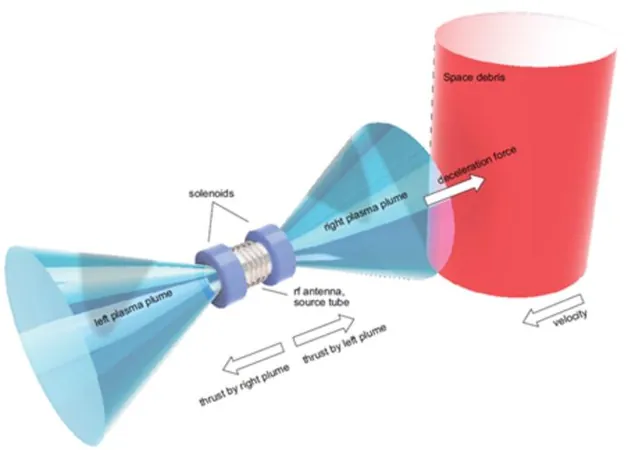
Transforming Space Cleanup: The Revolutionary Bi-Directional Plasma Thruster
2025-09-10
Author: Emma
Confronting the Growing Space Junk Crisis
In an age where our dependence on satellites is at an all-time high, the threat of Kessler Syndrome looms large. This phenomenon occurs when space becomes inundated with debris, making launches riskier and potentially rendering access to space impossible. Researchers are racing against time to find solutions, and one innovative approach could change the game.
The Innovative Solution from Tohoku University
Kazunori Takahashi and his team at Tohoku University have proposed a cutting-edge method that harnesses a type of magnetic field commonly used in fusion reactors. This bi-directional plasma thruster is designed to slow down space debris using an energizing plasma beam while counteracting the push with an equal thrust, allowing it to maintain its position.
Contact vs. Non-Contact Systems: The Ongoing Debate
Efforts to manage space debris have been largely categorized into contact and non-contact systems. While contact systems directly engage with debris—think nets or grappling hooks—they face challenges, primarily due to the unpredictable rotation of debris, which can lead to catastrophic collisions. Enter non-contact systems that offer a safer alternative. These utilize lasers, ion beams, and plasma beams to alter the speed of debris from a safe distance.
The Science Behind Plasma Thrusters and Their Challenges
One notable hurdle for plasma thrusters is Newton's third law: while aiming plasma at debris, the thruster itself is propelled away, reducing its effectiveness. However, Dr. Takahashi's innovative bi-directional thruster addresses this issue by balancing forces, providing the necessary thrust to engage larger debris targets effectively.
Boosting Power: The Game-Changing Cusp Magnetic Field
In a pivotal experiment, Dr. Takahashi improved the system's design by integrating a cusp magnetic field that intensified the plasma beam's force. Initial tests revealed a 20% increase in thrust, reaching a significant 17.1 mN at the same power level. When the power was ramped up to 5 kW, deceleration surged to 25 mN, edging closer to the 30 mN required to effectively deorbit a one-ton piece of debris in a timely manner.
Balancing Innovation with Practicality
Despite these breakthroughs, considerable work remains. Testing conditions in a vacuum chamber do not replicate the complexities of actual orbital environments, where debris shifts while being decelerated. Moreover, the system’s fuel consumption is twice that of other methods, raising practical concerns over efficiency and sustainability.
A Future Vision for Space Cleanup
As Dr. Takahashi continues refining this technology, the dream of a dual-thrust plasma engine actively eliminating hazardous space debris inches closer to reality. The stakes are high, and every new solution brings us one step closer to safeguarding our access to the final frontier.









 Brasil (PT)
Brasil (PT)
 Canada (EN)
Canada (EN)
 Chile (ES)
Chile (ES)
 Česko (CS)
Česko (CS)
 대한민국 (KO)
대한민국 (KO)
 España (ES)
España (ES)
 France (FR)
France (FR)
 Hong Kong (EN)
Hong Kong (EN)
 Italia (IT)
Italia (IT)
 日本 (JA)
日本 (JA)
 Magyarország (HU)
Magyarország (HU)
 Norge (NO)
Norge (NO)
 Polska (PL)
Polska (PL)
 Schweiz (DE)
Schweiz (DE)
 Singapore (EN)
Singapore (EN)
 Sverige (SV)
Sverige (SV)
 Suomi (FI)
Suomi (FI)
 Türkiye (TR)
Türkiye (TR)
 الإمارات العربية المتحدة (AR)
الإمارات العربية المتحدة (AR)